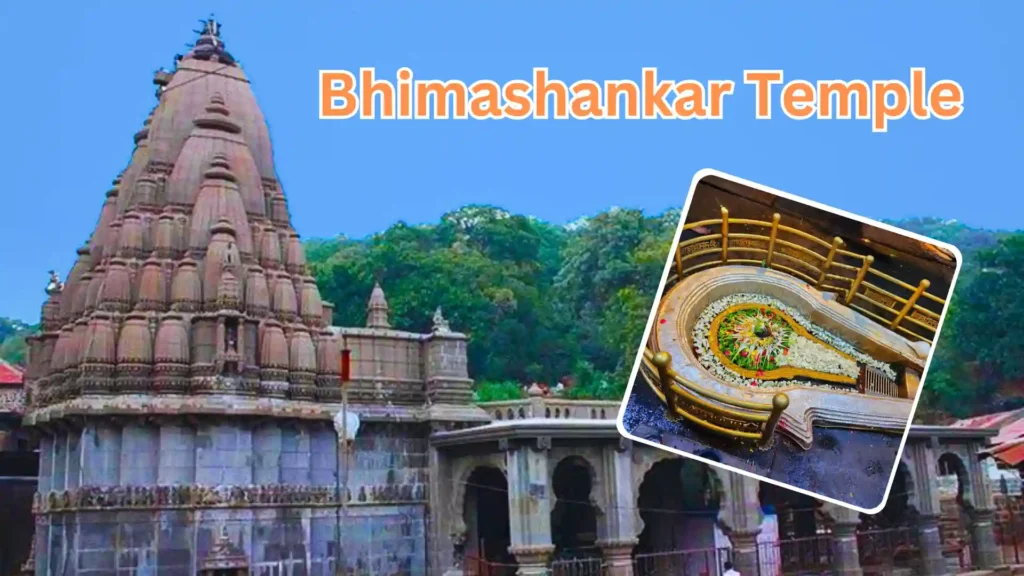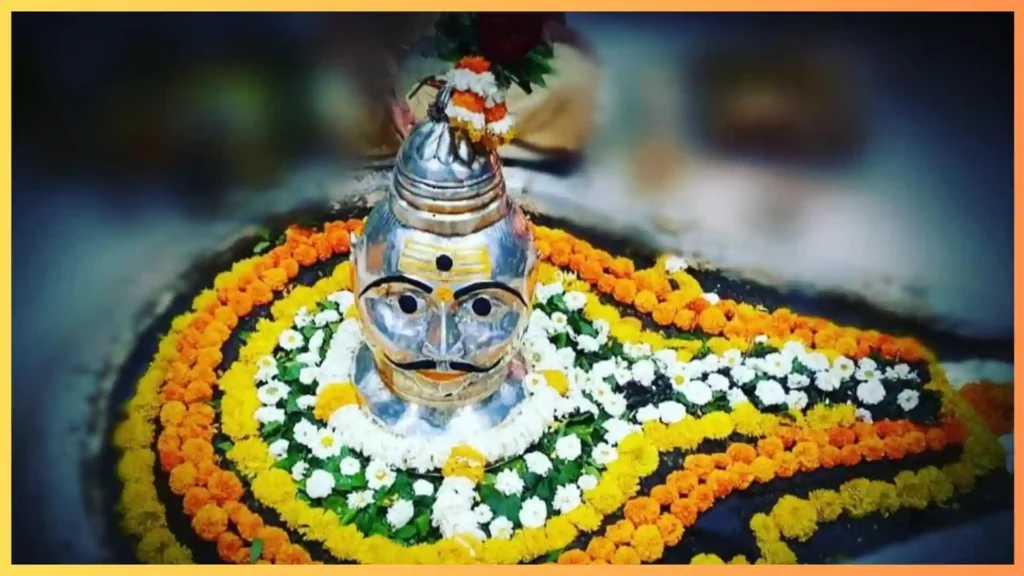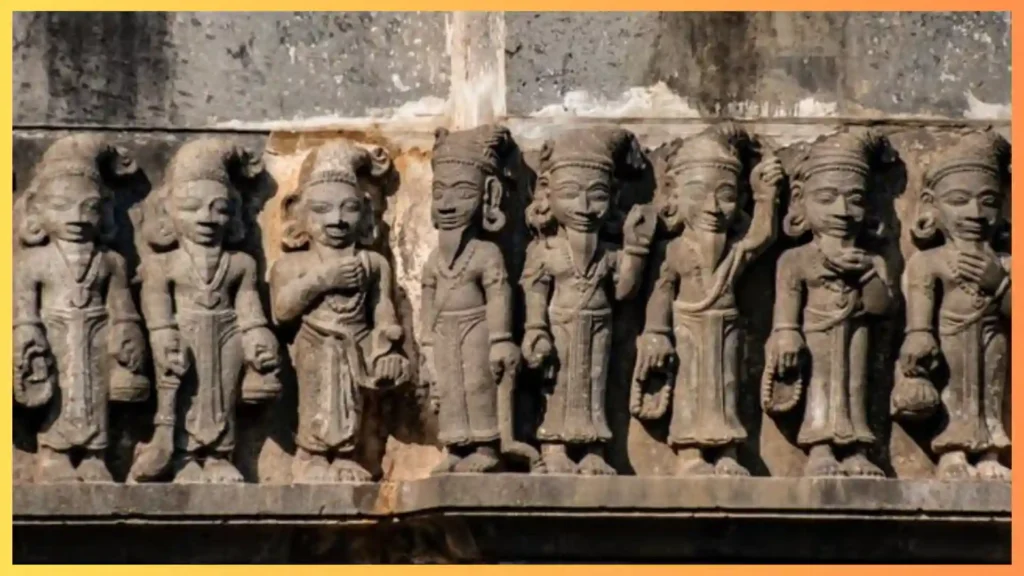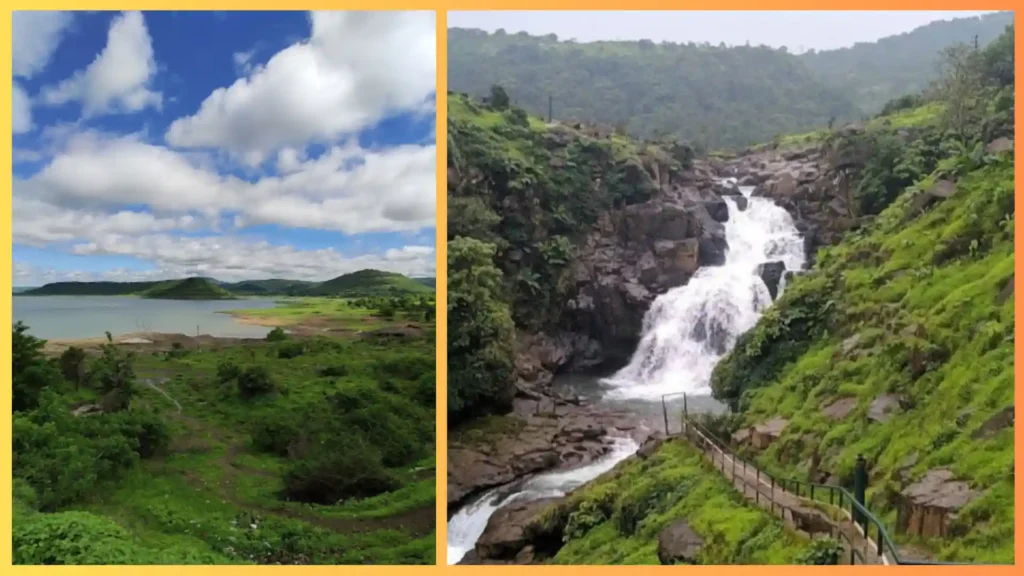
Introduction to Bhimashankar Jyotirlinga Temple
Bhimashankar Jyotirlinga Temple, located in the Sahyadri mountain range of Maharashtra, India, is one of the most revered and sacred shrines for Lord Shiva devotees. It is recognized as one of the twelve Jyotirlingas, where Lord Shiva is believed to have appeared as a pillar of light. Bhimashankar is not only a major religious destination but also a natural haven, nestled amid dense forests and surrounded by lush greenery. The calm and serene atmosphere combined with its religious significance makes Bhimashankar a spiritual retreat for thousands of pilgrims.
Significance of Jyotirlingas in Hinduism
The twelve Jyotirlingas hold immense significance in Hinduism. These sacred shrines are considered the physical embodiments of Shiva’s presence, where he manifested in different forms. According to ancient Hindu texts, the Jyotirlingas are places where Shiva descended to Earth in a form of light to bless his devotees. Each of the twelve Jyotirlingas is associated with a unique legend, giving it special spiritual significance. Bhimashankar is revered for being the place where Lord Shiva manifested to defeat the demon Bhima and protect his devotees.
Bhimashankar: The 6th Jyotirlinga

Bhimashankar is the 6th Jyotirlinga among the twelve holy shrines dedicated to Lord Shiva. Located about 110 km from Pune and 220 km from Mumbai, the temple attracts both spiritual seekers and nature lovers. The shrine is set in the Bhimashankar Wildlife Sanctuary, which adds to the peaceful and mystical atmosphere of the location. This Jyotirlinga is especially sacred because it combines spirituality with nature, offering a unique experience to visitors who come for both religious and ecological reasons.
Bhimashankar Jyotirlinga Story
- The Story of Bhima and Lord Shiva
One of the key legends associated with Bhimashankar is the story of the demon Bhima. Bhima, the son of Kumbhakarna (brother of Ravana), was filled with hatred towards Lord Vishnu and Lord Shiva due to the defeat of his ancestors. In a bid to avenge his family’s defeat, Bhima unleashed terror upon the local population. The locals, unable to bear the suffering, prayed to Lord Shiva for protection. Lord Shiva, in response to their prayers, manifested in the form of Bhimashankar and vanquished the demon Bhima. It is said that after Bhima’s death, Shiva stayed in the form of a Jyotirlinga in the Bhimashankar region, blessing the land and its people.
- Lord Shiva’s Emergence as Bhimashankar
Another legend tells that Shiva’s emergence as Bhimashankar took place to help his devotees and restore peace in the region. It is believed that after slaying the demon Bhima, Shiva settled in the Bhimashankar forests to bring balance to the environment. The Linga that formed at this site is considered self-manifested, and it draws devotees seeking blessings and divine energy.
Architecture of Bhimashankar Temple

The Bhimashankar Temple is a fine example of ancient Indian architecture that blends religious aesthetics with simplicity. The temple is believed to have been constructed in the 13th century, though it has seen multiple renovations over the years. Its architecture is mainly based on the Nagara style, which is prevalent in many temples across India.
- Ancient Nagara Style
The Nagara style of architecture is known for its beehive-shaped spires called Shikharas, which are distinctive features of Northern Indian temples. The Bhimashankar Temple’s Shikhara, though modest in height, adds to the solemnity and divine appeal of the temple. The structure is designed to create a connection between the earthly and the divine realms, guiding devotees in their spiritual journey.
- Key Structures within the Temple
Inside the temple, the sanctum sanctorum holds the Shivling, considered to be self-manifested. The temple complex also includes a Mandapa (hall) for devotees to gather and a courtyard with smaller shrines dedicated to other Hindu deities like Lord Vishnu and Goddess Parvati. The intricate carvings on the temple walls depict scenes from Hindu mythology, making the temple not just a place of worship but also an artistic treasure.
- Historical Importance of Bhimashankar
The Bhimashankar Temple has a deep historical and cultural significance. Over the centuries, it has been under the patronage of various dynasties, each contributing to its preservation and expansion.
- Influence of the Chalukyas
The Chalukya dynasty, known for its contributions to temple architecture, played an important role in shaping the initial design of Bhimashankar Temple. During their reign, several temples in the Deccan region were constructed, and Bhimashankar was among them.
- Contributions of the Marathas
The Maratha Peshwas, particularly Nana Phadnavis, were instrumental in restoring and expanding the temple. Nana Phadnavis was a devout follower of Lord Shiva and took special interest in the preservation of Bhimashankar Temple, ensuring that the spiritual significance of the temple was maintained while allowing for better access for pilgrims.
- Preservation by the Archaeological Survey of India
Today, Bhimashankar Temple is a protected monument, and the Archaeological Survey of India (ASI) is responsible for its upkeep. The ASI ensures that the temple remains structurally sound and that its ancient heritage is preserved for future generations.
Significance of Pilgrimage in Hinduism
In Hinduism, pilgrimage is considered a way to cleanse the soul and seek blessings from the divine. Bhimashankar, being a Jyotirlinga, holds special significance for devotees, as it is believed that offering prayers here helps in attaining salvation. Devotees travel from far and wide to visit the temple, especially during the festival of Maha Shivaratri, when the entire region comes alive with religious fervor.
Best Time to Visit Bhimashankar

The best time to visit Bhimashankar is between October and March, when the weather is pleasant and ideal for both temple visits and treks. The monsoon season from June to September transforms the region into a lush green paradise, although heavy rains can make travel a bit challenging.
Religious Festivals and Events
Bhimashankar is particularly popular during Maha Shivaratri, the grand festival dedicated to Lord Shiva. Devotees from across the country flock to the temple to take part in special rituals and prayers. During this time, the temple organizes Abhishekams (ritualistic bathing of the Linga), and the entire atmosphere is filled with chanting and religious offerings.
Exploring Bhimashankar Wildlife Sanctuary
One of the unique features of Bhimashankar Jyotirlinga is its location within the Bhimashankar Wildlife Sanctuary, which houses a rich diversity of wildlife. The sanctuary is known for the Indian Giant Squirrel (Shekru), an endangered species that is the state animal of Maharashtra. Apart from Shekru, the sanctuary is home to leopards, deer, and numerous species of birds, making it a significant ecological zone.
Trekking and Adventure Opportunities
For adventure lovers, Bhimashankar offers exciting trekking routes through the Western Ghats. The trails take you through dense forests, waterfalls, and misty hills. The Bhimashankar to Shidi Ghat trek is particularly popular among trekkers, offering stunning views of the surrounding landscape and an opportunity to experience nature up close.
How to Reach Bhimashankar Temple
Bhimashankar is one of the revered Jyotirlinga temples located in Maharashtra. Here’s how you can reach this sacred site from various nearby cities:
Traveling to Bhimashankar from Pune By Road/Car:
- From Pune station, take the Old Pune-Mumbai road for about 13 km until you reach Nashik phata/Kasarwadi.
- Turn right onto the Pune-Nashik road.
- Continue on this road for approximately 60 km until you reach Manchar.
- Manchar, take a left towards the Bhimashankar road.
- The distance from Manchar to Bhimashankar is about 65 km.
The entire journey takes around 3.5 hours. The total distance from Pune to Bhimashankar is approximately 110 km. Driving during the rainy season can be particularly enjoyable, with scenic greenery and fog along the way. However, please drive carefully in foggy conditions.
By Train:
There are no direct trains from Pune to Bhimashankar. The nearest railway station is Pune itself. Travelers must take a bus from Pune to reach Bhimashankar.
By Bus:
Frequent buses run from Shivaji nagar Bus Stand to Bhimashankar, with departures every 30 minutes from 5:30 AM to 4:00 PM. The bus journey takes about 4 hours. To reach Shivaji nagar Bus Stand from Pune station, you can take an auto-rickshaw (around 2 km distance).
Traveling to Bhimashankar from Mumbai By Road/Car:
- Begin your journey on the Mumbai-Pune Expressway.
- Continue on the expressway until you reach Talegaon toll plaza (the second toll).
- Exit towards Chakan, which is about 25 km away.
- At Chakan Chowk, turn left towards Nashik.
- Follow the Nashik road to reach Manchar, which is about 31 km from Chakan.
- At Manchar, take a left towards Bhimashankar.
- The total travel time from Mumbai to Bhimashankar is also around 3.5 hours.
By Bus:
- Direct bus services from Mumbai to Bhimashankar are limited. You can find buses from:
- Kalyan to Bhimashankar (available from Kalyan bus depot).
- Ghatkopar (Kurla) to Bhimashankar (available from Kurla bus depot).
- There are no direct buses from Dadar, Mumbai Central, or Borivali to Bhimashankar.
By Train:
There is no direct train from Mumbai to Bhimashankar. The best route is to take a train to Pune and then continue by bus to Bhimashankar.
Traveling to Bhimashankar from Nashik By Road/Car:
From Nashik, take the Nashik-Pune road via Sangamner/Manchar. At Manchar, turn right towards Bhimashankar. The total distance is around 210 km, and it takes approximately 4.5 hours to travel.
By Train:
There are no direct trains from Nashik to Bhimashankar. Traveling by road is recommended.
By Bus:
There are no direct buses available from Nashik to Bhimashankar. Travelers must take a bus from Nashik to Pune, then switch to another bus at Manchar to reach Bhimashankar.
Bhimashankar Temple Nearest Railway Stations
- Neral Railway Station
Located about 23 kilometers from Bhimashankar, Neral Railway Station is approximately a 3-hour drive away. For a direct route, consider hiring a cab or taxi from Neral to Bhimashankar. Alternatively, you can take a train from Neral to Pune and then continue your journey to Bhimashankar by bus. - Karjat Railway Station
Situated 29 kilometers from Bhimashankar, Karjat Railway Station offers convenient access to the temple. You can either head to Neral and catch a cab or take a train to Pune, where you’ll find more transportation options to reach Bhimashankar. - Lonavala Railway Station
About 38 kilometers away, Lonavala Railway Station provides another option for travelers. Similar to the other stations, you can hire a cab or taxi for the journey. Alternatively, take a train from Lonavala to Pune and explore various bus services or more economical taxi options to reach Bhimashankar.
Queue Duration for Bhimashankar Darshan
Expect to spend about 3-4 hours in the queue for darshan at Bhimashankar. To make the most of your visit, it’s advisable to arrive early. If you get hungry while waiting, feel free to bring some snacks along, or you can find a variety of options at the temple entrance. There are also a couple of small restaurants nearby that serve decent snacks like idli, vada pav, and bhajiya. Enjoy your spiritual journey and stay nourished along the way!
VIP Pass Information for Bhimashankar Temple
The cost for a VIP pass at Bhimashankar is Rs. 500 per person. When you arrive, you will notice a barricaded area along the steps leading to the general darshan (which is free and does not require a ticket). If you prefer a more expedited experience, you can purchase the VIP darshan ticket for Rs. 500 per person. With this pass, you can descend the stairs directly without having to wait in the regular queue. Enjoy a smoother and more serene visit to this sacred site!
Bhimashankar Abhishek Puja Costs and Booking

At Bhimashankar, devotees can participate in various Abhishek Puja offerings to seek blessings and enhance their spiritual experience. Here are the available options along with their costs:
- Abhisheka: ₹151
- Rudrabhisheka: ₹351
- Panchamruth Snan Rudrabhisheka: ₹551
- Ekadasa Rudrabhisheka: ₹1,100
- Maha Pooja + Panchamrutha Rudrabhisheka + Bhojan for 5 Brahmins: ₹2,100
- Laghu Rudra: ₹3,100
- Laghu Rudra + Bhojan for 11 Brahmins + Bhagawan Naivedya: ₹5,100
Bhimashankar Jyotirlinga Aarti Timings
The sacred Bhimashankar Jyotirlinga offers a series of aartis and pooja ceremonies throughout the day, allowing devotees to immerse themselves in spiritual devotion. Here are the key timings:
- Kakada Aarti: 4:30 AM
- Nijarup Darshan: 5:00 AM
- Regular Pooja and Abhishek: 5:30 AM
- Naivedya Pooja (No Abhishek inside): 12:00 PM
- Regular Pooja and Abhishek: 12:30 PM
- Madhyan Aarti (No Darshan for 45 minutes): 3:00 PM
- Shringar Darshan (No Abhishek inside): 4:00 PM – 9:30 PM
- Evening Aarti: 7:30 PM
- Mandir Closure: 9:30 PM
Hotels Near Bhimashankar Jyotirlinga Temple
If you’re planning a visit to Bhimashankar Jyotirlinga and looking for budget-friendly accommodation, here are seven excellent options to consider. These hotels offer comfortable stays at affordable rates, ensuring you have a pleasant experience while exploring the spiritual charm of the area. With convenient locations ranging from 2.9 km to 5 km from the temple, you’ll find it easy to access this revered site and enjoy the serene surroundings.
- Hotel Vrinda Regency
– Location: Near Guwahati Bus Stand
– Distance: 3.5 km from Bhimashankar Jyotirlinga
- Hotel O Gorchuk
– Formerly known as Victoria Villa Garchuk
– Distance: 2.9 km from Bhimashankar Jyotirlinga
- Hotel GS Residency
– Location: Ahom Gaon
– Distance: 4.1 km from Bhimashankar Jyotirlinga
- Happy Home Living
– Location: Near Guwahati Bus Stand
– Distance: 4.7 km from Bhimashankar Jyotirlinga
- Hotel Nezone
– Location: Near Guwahati Bus Stand
– Distance: 3.9 km from Bhimashankar Jyotirlinga
- Hotel Royal Heritage
– Location: Near Guwahati Bus Stand
– Distance: 5 km from Bhimashankar Jyotirlinga
- The Homestead
– Location: Garchuk
– Distance: 3.9 km from Bhimashankar Jyotirlinga
Places to Visit Near Bhimashankar Jyotirlinga
Nestled in the lush Western Ghats, Bhimashankar is not just a sacred pilgrimage site; it’s a gateway to breath-taking natural beauty and rich cultural heritage. Beyond the revered Jyotirlinga temple dedicated to Lord Shiva, this enchanting region offers a plethora of attractions that cater to nature lovers, adventure seekers, and history enthusiasts alike. Here’s a curated list of must-visit places that promise to enhance your experience in and around Bhimashankar:
- Moshi Dam
A tranquil reservoir embraced by nature’s beauty, Moshi Dam is an ideal spot for picnics and relaxation amidst serene surroundings.
- Pune-Okayama Friendship Garden
This beautifully landscaped garden features serene ponds, charming bridges, and lush greenery, providing a peaceful retreat for those seeking tranquility.
- Shivneri Fort
The birthplace of the legendary Shivaji Maharaj, Shivneri Fort is steeped in history and offers panoramic views of the surrounding landscape.
- Morya Gosavi Temple
Dedicated to the revered Sant Morya Gosavi, a prominent figure in the Bhakti movement, this temple offers spiritual solace and rich historical insights.
- Bhandardara Lake
Surrounded by rolling hills and verdant landscapes, Bhandardara Lake presents a peaceful and picturesque setting perfect for unwinding.
- Randha Falls
A majestic waterfall plunging into a deep gorge, Randha Falls captivates visitors with its breathtaking and awe-inspiring beauty.
- Bhavani Museum
This culturally significant museum houses a collection of ancient artifacts, sculptures, and artworks, providing visitors with a glimpse into the rich heritage of the region.
- Induri Fort
A historical hill fort showcasing intricate architecture, Induri Fort offers panoramic views and a fascinating glimpse into the region’s past.
- Lenyadri Caves
These ancient rock-cut caves, adorned with beautifully carved sculptures and inscriptions, showcase the cultural and religious heritage of the area.
- Ozar Ganpati Temple
A revered temple dedicated to Lord Ganesha, Ozar Ganpati Temple attracts pilgrims with its sacred ambiance and traditional architectural beauty.
- Siddhatek Ashtavinayak Temple
Known for its unique idol, this significant pilgrimage site dedicated to Lord Ganesha holds great spiritual importance in Hindu mythology.
- Bhimashankar Trek
An adventurous trek through lush green forests and hilly terrains, Bhimashankar Trek provides a unique opportunity to connect with nature and explore the area’s stunning beauty.
- Shiv Mandir, Bhimashankar
This quaint and serene temple dedicated to Lord Shiva offers a peaceful ambiance for devotees and visitors seeking spiritual solace.
- Karjat
Nestled in the nearby hills, Karjat is a charming hill station known for its scenic beauty, trekking trails, and adventure activities, making it a perfect getaway for nature enthusiasts.
Some other things to keep in mind when visiting the Bhimashankar Temple include
When planning your visit to Bhimashankar Temple, keep these helpful tips in mind:
- Footwear: If you’re visiting during the monsoon season, opt for shoes with good grip, as some areas can become slippery.
- Accessibility for Senior’s: For senior citizens, dolis and palkis are available to assist them on their journey to the temple. Additionally, buses conveniently stop near the temple entrance.
- Dress Code: While there aren’t strict dress regulations, wearing traditional attire is always appreciated when visiting the temple, enhancing the spiritual experience.
